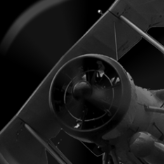Search the Community
Showing results for tags 'stringbag'.
-
Hello everybody! After struggling with my own stupidity I hope I could fix the problems with my photo links..🥴 So lets start again! Here is my attempt to build Trumpy's 1/32 scale Fairey Swordfish MK II in the Service of the 815 Sqn. I own the kit a few years ago and had it on my to-do list since then. But it seems I mised all the after market stuff that was released since then. I only get some seatbelts, painting masks and PE's for the exterior from Eduard. As I said it before, there were so many great Swordfish builds here in different scales that I was inspired by I want to try it once. So I hope the links work this time! Starting with the Bristol Pegasus 3M by adding some photoetch parts from Eduard. Edding the ignition wires. All parts were painted with different metal colors from AK Extreme Metal, weathered and dirtyed with oils.
-
Fairey Swordfish Mk.I (A04053B) 1:72 Airfix Of the hundreds of types that saw service during World War II, the Fairey Swordfish was one of the handful of aircraft that can be said to have passed from history into legend. The large ungainly fabric-covered biplane flew for the first time in 1934 and entered squadron service with the Fleet Air Arm in 1936. Designed as a torpedo bomber and spotter-reconnaissance aircraft, the Swordfish was also used for other roles such as anti-submarine warfare. Despite its antiquated appearance and some unsuccessful attempts to replace it, it was still in squadron service at the time of Germany’s capitulation in May 1945. Nicknamed the ‘Stringbag’ because of the wide range of loads it could carry and the profusion of rigging-wires holding it together, the list of key actions the Swordfish was involved in is the stuff of legend. It took part in the attack on Taranto Harbour and played a pivotal role in the destruction of the German battleship Bismarck, fatally damaging its rudder with a torpedo. Engagements such as these demonstrated not only the tough, dependable qualities of the Swordfish, but also the professionalism and bravery of the crews that flew them, often in the face of heavy losses. The Kit Packed into a long top-opening box are four sprues of grey plastic and a single, small clear sprue. Together they hold a total of 125 parts. The sprues are cleanly moulded with reasonably fine attachment points. A quick examination of the sprues reveals that the level of detail Airfix have achieved with this kit, both in terms of moulding and engineering, is outstanding. The panel lines, few that they are on a Swordfish, are reasonably subtle. Airfix have also taken great care to achieve a realistic stretched fabric texture on the flying surfaces and fuselage, and they have done so very successfully. Construction begins with the interior that is made up of no fewer than eighteen parts including the internal framework structure, crew positions, a beautifully detailed radio, a moveable Lewis gun for the aft cockpit (along with spare magazines), the forward-firing Vickers gun, and a decal for the instrument panel. The radio set features some lovely moulded detail that will come up well under some careful dry-brushing, and this all makes for a highly detailed cockpit for a 1:72 scale model. The cockpit assembly is placed into the fuselage halves after adding a number of clear windows and the forward-firing machine gun for the pilot’s use. The short lower wing stubs are fixed to the fuselage underside insert before it is fixed in place, and a deck behind the rear gunner’s position is also slotted in. The lower wing supports are short and thick, inserting into sockets on the fuselage and lower wing, next to the oil cooler that is a prominent feature of the starboard front fuselage and is superbly detailed, as is the engine and cowling. The cowling itself is made up of four parts, which may seem a little over-engineered to some, but as mentioned above this kit seems to have been designed for enthusiasts and so fewer shortcuts have been made at the expense of detail. The cabane struts and windscreen are added to the top of the fuselage behind the cowling, the motor and its detailed cowling are joined together, followed by the single part prop with spinner and a pin in the rear that can leave the prop loose if you’re careful with the glue. Moving onto the flying surfaces, Airfix haven’t made any compromises here either, with both the elevators and rudder all fully poseable and featuring nice hinge detail. The tailplane strut is moulded in one piece for ease of assembly, although this has left it with a small sink mark on the underside, albeit in a very easy place to fill. The kit can be finished with wings extended or folded, which is where Airfix’s clever design really comes into its own. The interplane struts are joined at the bottom so that the parts form a square U-shape. The horizontal part that helps align the vertical struts is then partly hidden between the upper and lower halves of the upper wing. This method of construction ensures that everything joins up at the correct angles and the finished model should have more strength as a result If you decide to build your Swordfish with the wings unfolded, a separate spar must be inserted in the centre wing section. If you want to build your Swordfish with wings folded, this spar is omitted and the two jigs that can be seen on the sprues above are used to align the centre wing sections while they are glued together. This makes a complex stage of construction as simple as possible for all those biplane phobics out there - me included. The lower outer wing panels are joined to the centre stubs with an additional strut either in-place for extended wings, or as a separate assembly that is joined to the wing at an angle for the folded option. A small insert is fitted inside the upper wing centre section to tidy things up. Two folding V-shaped clips attach to the underside of the tail fins either pointing aft when not in use, or forward and attached to the folded wing to keep it in place on the pitching deck of a carrier. The landing gear struts were installed around the same time as the wing, and two wheels in separate halves are fixed onto their rectangular pegs. Just the fiddly parts are left, and I’m ignoring the rigging because it terrifies me, and Airfix don’t provide a diagram for you, but there are bound to be some out there. The torpedo is moulded in halves, and you’ll need to drill two 0.8mm holes to attach it to the underside of the airframe later. A set of perpendicular fins and the screw are inserted in the rear, and there’s a three-part trestle glued under the belly of the beast onto which the torp fits. If you want to put the torpedo on the included trolley however, just forget about drilling the holes and build up the trolley from the four parts in the box. With the model inverted, you can fit the racks to the outboard panels of the lower wing along with the clear landing lights that are recessed into the leading edge. The crew step, hand-crank for the engine (surely not?) plus the arrestor hook in the tail can also be glued in while she’s inverted, then with her placed back on her wheels, the single Lewis gun with plate mag are clipped onto the mount in the gunner’s enclosure. Markings There are two/three options on the decal sheet in this boxing, one of which appears twice in different schemes that gives the modeller a wider choice. From the box you can build one of the following: W5984/H flown by Lt.Cmdr Eugene Esmonde VC, DSO Operation Fuller (the Channel Dash) No.825 NAS, RAF Manston, England, 12th Feb 1942 K8386/945 No.824 Naval Air Squadron, FAA, HMS Eagle & RAF Kai Tak, Hong Kong, China Station, May-Nov 1937 There is conjecture whether option A was actually over-painted with black paint before take-off, in a manner that was described as hurriedly, although spelt wrong! Decals are by Cartograf, which is a guarantee of good registration, sharpness and colour density, with a thin gloss carrier film cut close to the printed areas. Apologies for the rough looking top profile, but it isn’t available online, so I had to scan in the instructions. Conclusion This is a welcome re-release of a great little kit (I use the term little, as I’m a 1:48 guy normally), with tons of detail moulded-in. It’s short a rigging diagram, but other than that it’s a handsome model, so give it your best shot. Very highly recommended. Review sample courtesy of
-
TopDrawings #95 Fairey Swordfish (9788366148871) Kagero Publishing via Casemate UK The Swordfish began life in the early 30s as a speculative development by Fairey that was later re-designed to fit a 1933 specification that added the torpedo bomber role to its previous remit of spotter ‘plane. After many changes and tests that resulted in the loss of at least one airframe, an order was given for around 70 airframes, with production transferring to Blackburn as war become inevitable. The airframe was essentially outdated by outbreak of war, but improvements gave it longer legs, more power in what became known as the Swordfish I. The II added radar and hardpoints under the wings for rockets, the III adding a more capable radar, and the IV with an enclosed cockpit used as a trainer by the Canadians. the Stringbag outlived the Albacore that was intended to replace it with over 2,000 made, and was instead supplanted by the Barracuda, which kept it within the Fairey family. It saw substantial action in the torpedo bomber role, some more famously than others, and often suffered heavy losses due to in part to the task it was assigned, as well as its relatively slow speed, but it invariably got the job done and is credited with delivering the torpedo to the Bismark that disabled its rudder and allowed the British fleet to catch and subsequently destroyed it. It was well-loved then and is still a welcome performer at airshows, especially when the still-airborne crew stand and salute in tribute to its brave pilots and crew during the war. We have kits in almost every scale from 1:144 upwards, some old, some new with some major and minor manufacturers having releases in their arsneal, showing that it's a popular niche subject. The TopDrawings series majors on scale plans, which is the main thrust, but also includes a little background information, some pertinent profiles, and separate A2 sheets printed on both sides with drawings of various versions of the aircraft. The book is written in English on the left of the page with Polish on the right, which translates to top and bottom for the captions to the various drawings within. The book itself is bound in a card cover and has 20 pages, and the rear cover is devoted to additional profiles of two Swordfish Is. After the introduction the first half of the plans show the Mark I from every angle with wings folded and deployed ready for flight. After this are the colour profiles with four pages of profiles of Mark Is and IIs wearing some interesting camo schemes, including one of the Bismark attackers. After the break there is another set of plans for the II and III, including many scrap diagrams of equipment, warloads, as well as fuselage cross-sectional shapes. The lesser known Seaplane version and Mark.IV with its bubble canopy are shown toward the end, and cross-sections of the wing ribs are given on the last page. Throughout the book, there are numerous smaller diagrams that show equipment layout such as the cockpit, landing gear, engine and prop Conclusion These books are essential for the modeller that enjoys comparing their models against scale plans, and wants them to be as accurate as possible, with the separate large scale plans quite useful, especially if you model in 1:48 or have a large stain on the wall that could be beautified by posting the plans over it to enjoy. Currently (at time of writing) on offer at a discounted price from Casemate UK Review sample courtesy of
-
Swordfish Mk.II Update Sets (For Tamiya) 1:48 Eduard Tamiya's Swordfish has been around a while, and it's a great kit. Eduard's new release of range of sets are here to improve on the kit detail in the usual modular manner. Get what you want for the areas you want to be more of a focal point. As usual with Eduard's Photo-Etch (PE) and Mask sets, they arrive in a flat resealable package, with a white backing card protecting the contents and the instructions that are sandwiched between. Update Set (49901) Two frets are included, one nickel plated and pre-painted, the other in bare brass. A complete set of new layered instrument panels and other side mounted instruments and radios are the primary parts on the painted set, with new rudder pedals; cockpit details; top skins for the machine gun drum mags, with ring & bead sights; ammo feeder, outer jackets and ammo box parts for the fixed guns; wiring harness and bracing parts for the engine; launch rail and ignition wire details for the kit rockets; small parts for the interplane struts; details for the torpedo and bombs; a new mounting point for the underwing bomb racks plus the racks and bomb shackles themselves. Zoom! Set (FE901) This set contains a reduced subset of the interior, namely the pre-painted parts that are used to improve on the main aspects of the cockpit, as seen above. Whatever your motivations for wanting this set, it provides a welcome boost to detail, without being concerned with the structural elements. Seatbelts STEEL (FE902) In case you don't already know, these belts are Photo-Etch (PE) steel, and because of their strength they can be etched from thinner material, which improves realism and flexibility in one sitting. Coupled with the new painting method that adds perceived extra depth to the buckles and other furniture by shading, they are more realistic looking and will drape better than regular brass PE. The pilot's "armchair" needs two slots cutting in the sides to admit the lap belts, with the two shoulder straps draped over the seatback. The other two crew get lap belts only, with their location on the cockpit framework shown in the drawings. Masks (EX595) Supplied on a sheet of yellow kabuki tape, these pre-cut masks supply you with a full set of masks for the small windscreen and spotting windows (plus other glazed parts), plus a set of hub/tyre masks for all the wheels, allowing you to cut the demarcation perfectly with little effort. Review sample courtesy of
-
Hello chums. Here at long last is the RFI of my Airfix Handley Page O/400 that I finished a few months back. I have been working in the Float plane GB since its finale and haven't had the chance to get the photo tent up until that one was finished. Here are some links to the Group build if you're interested. Catalina "BLACKCAT" WIP Catalina "BLACKCAT" RFI And the WIP for this build can be found here. WIP The build is based around the "Last Days" wording that I saw in a reference book during the build. This was in reference to the flight performed by Sir Keith Park. "Sir Keith was originally from New Zealand and became an air ace with the Army’s Royal Flying Corps. Initially in the First World War he served as a soldier at Gallipoli and the Somme, but became a pilot and ended the war having shot down 20 enemy aircraft. After the war, at a time when air flight was still in its infancy, he decided to demonstrate what could be accomplished with large aircraft. Sir Keith and his crew of eight flew their Handley Page 0/400 with two 350 h.p. Rolls-Royce engines at an average airspeed of 66mph. The 1,880 mile flight in 1919 took 30 hours in the then state-of-the-art bomber despite unpredictable weather, and returned four days later." A wonderful story I'm sure you'll agree. During the build a few sad occurrences, the death of two of our girls. Belina and Doctor who. ( hens ) below is Belina in her sick pen. And the death of one of my favourite Directors. George A Romero who watches me build all this plastic tom foolery. So as it happens this build and its FRI are dedicated to them all. Truly the "last Days" Without further ado I bring you many, many, probably too many but who cares its Christmas, pictures of the Handley Page O/400 in all its glory. Tamiya paints. (acrylic) Ezline (lots of it) Flory wash. RP toolz punch. and the usual blood, sweat, tears, wine, friends. you get the picture. Phew. Hope you enjoy the pics. I'm orf to post this now so I don't loose it all. Have you all a lovely Sunday and Merry Christmas and more than that. Happy modelling chums. Johnny
- 47 replies
-
- 75
-

-

-
- Handley page O/400
- Airfix
-
(and 1 more)
Tagged with:
-
This is my first RFI as a newbie member of the forum. When I decided to get back modelling I picked up a few cheap and basic kits to practice on with a view to trying out at least one new technique with each. In this instance the goal was rigging but I ended up trying out a whole lot more. Despite the age of this kit it was a real pleasure to work with and it's whetted my appetite for more! I've already started on the next two 'practice pieces' from the (rapidly expanding) stash. As I intend building another, more detailed, Swordfish in the future this one was was built in the radar equipped (pic 3), rocket toting, Mk III guise. WIP is >HERE< Swordfish RFI 1 by Martin Fay, on Flickr Swordfish RFI 2 by Martin Fay, on Flickr Swordfish RFI 3 by Martin Fay, on Flickr Any feedback, criticism and advice welcomed! While researching for the build I found myself intrigued by the aircraft, the missions it was involved in and the men that flew them. As a result I've ordered copies of "The last Torpedo Flyers" and "War in a Stringbag" to learn more on the subject. Cheers, Martin
- 14 replies
-
- 36
-

-
Fairey Swordfish Mk.1, (E)5H/P3999. 824 Sqn. Taranto raid, Nov.11, 1940 Pilot: Lt(A) J. Welham Observer Lt. P. Humphreys Model: Matchbox 1/72 When I began this Matchbox build back in March, WIP here: http://www.britmodeller.com/forums/index.php?/topic/234999297-another-matchbox-swordfish/page-1 I naively assumed it would be a relatively simple undertaking. Nearly six weeks of research and obsession later I feel able to present my first RFI on this forum of a Swordfish from the Taranto raid. I'd like to start start with the words of the pilot, John Welham, describing the run in as part of the second wave: 'There was some light cloud but it was a beautiful starlit night with a rising moon, and I remember that it was surprisingly cold. When we were more than an hour's flying time from Taranto we could see flickering lights on the horizon, and when we were closer this was clearly the mother and father of all anti-aircraft barrages.' (Sturtivant, Ray. The Swordfish Story p.60) A Matchbox mystery... I don't intend saying anything derogatory about the limitation of the kit - it was fun to make as a teenager in the 70s and just as much fun to do again now. However, as I started doing a bit of research online about the 824 Sqn aircraft option offered in the kit (and featured in the typically evocative box art) I started to get rather confused at the lack of clarity on aircraft 5B/K8419, as an aircraft seconded from HMS Eagle with this designation didn't seem to have taken part in the Taranto raid. Not being a naval historian, I put this down to my inexperience and duly posted a query on this forum about the matter. I'm greatly indebted to 'Seahawk' who solved this conundrum, pointing out that John Welham's autobiography (p.85) clearly states that (E)5B was ashore at Deikhela airfield in Egypt at the time of the raid. Indeed, the last page of Stuart Lloyd's magnificent Fleet Air Arm: Camouflage and Markings reproduces a photo of 5B undergoing repairs in the Western Desert in late August of 1940. For the Taranto raid in November, Welham was flying (E)5H instead, so by a process of elimination regarding aircraft from Eagle, the Matchbox box art and decal option would appear to be wrong. The individual aircraft histories in Sturtivant's Swordfish book backs this up by indicating that 5H/P3999 did take part in the Taranto raid. 5B's only engagement is listed as the Bomba Bay raid on 22/23 Aug (when presumably it sustained the damage seen being repaired in the photo in Lloyd's volume?). Last night I discovered an apparently correct illustration of 5H from Replic magazine (issue 100), reproduced online here: http://wp.scn.ru/en/ww2/b/564/9/3 Mentioned in dispatches.... A number of other individuals have also been provided invaluable help on the build: 'iang' did his best to keep my colours and markings matching the historical record (though I'd already applied 'Sky' undersides by that time and decided to live with the shame..). 'John Aero', 'Ex-FAAWAFU' and Nick Millman also weighed in with info and images on the Observer's 'monkey-chain' that stopped him pitching over the side. 'Seahawk' also confirmed the weapons loadout. 'Spadgent' just made me keep buying more gear - watch that lad.... The build... This marked a number of firsts for me: airbrushing, scratch building, photo-etch, custom decals, rigging. Some plan views: And some obliques: Technical matters For those interested the following changes were made to the basic kit: 1. Opened up rear cockpit and added long range fuel tank. 2. Cut Observer in half and rebuilt him as standing figure. 3. Built a new arrestor hook and carved out a recessed channel for it to sit in. 4. Added sleeves to oleo legs. 5. Rebuilt torpedo with more detailed prop/fins at rear and added detonator. 6. Built new torpedo cradle. 7. Added a pitot tube and wiring to port wing. 8. Added torpedo sights. 9. Built a new rear cockpit interior, including a (slightly) more accurate mounting for rear Lewis gun. 10. Added control horns for elevators and rudder. 11. Added control cable shrouds, ballast inspection hatch and catapult attachment to mid/rear fuselage on either side. 12. Scribed sides and undersides of fuselage/wings, added fastener details. 13. Added dinghy housing to port topside wing. 14. Added x4 mountings and azimuth compass to rear cockpit. Also added leather trim. 15. Built (Marabu M72011) PE flare racks and a flare. 16. Added folding wing tie-backs onto underside of tail planes. 17. Added canvas cover to housing for rear Lewis gun. Decals Roundels and tail flash were OOB, serial and tail number added from Ventura V7252 RN number set. (I'm aware that the tail number/letter should be a bolder style but I only had the ones in this sheet to work from...) Weathering Tamiya acrylics for paint scheme, home-made pin wash, various W&N black/umber/sienna oil washes for detailing. Powdered lavender chalk for final fading/weathering prior to final matt varnishing. Thanks for reading and to all who pitched in on the WIP. Now to try and choose the next build. Meteor or Stranraer - anyone any preferences? Regards to all, Tony
- 19 replies
-
- 33
-

-
One of the kits I am working at in this period is the nice Airfix Fairey Swordfish that I consider a true masterpiece especially when we think of the price and the quality. This plane is one of my "best of all" and in the past I already built an Airfix one and a Matchbox one while the Frog is still sitting on the stash. Now I've begun two versions, the classic torpedo version Mk.I and the Mk.III where I am going to use the Pavla resin detail set no. U72.134 Well, no problem with the Mk.III where I'm following the Pavla instructions sheet and where the navigator place is occupied by the "electronic", maybe electric radar equipment. But ........ then ...... My great concern is about the navigator seat position. I've several books about the Stringbag but I didn't find a clear picture of this seat. I assembled, maybe unfortunately, too much in a hurry trusting in Airfix instructions leflet. I've thought it's a British company, it's a British plane they know very well their work ..... But the in any case before closing the interiors I must solve my doubt. Now I have still a lot of work to do because I have to detail the side panels and so on .... Is it the navigator seat POSITION correct? In this position it's quite under the bulkhead that divides the pilot seat from the navigtor one. Not to easy to seetle in. Surely more confortable than standing in the Atlantic Ocean winds anyway. The second question is about the safety belts of these seats. Also in this case I didn't find clear and interesting pictures. I hope that some of you Merry Gentlemen can help me to complete these Navy glories..... All the best from Italy Ezio
-
Rib Tape Decals 1:48 HGW WWI biplanes were usually fabric covered, and made predominantly of wood to keep the weight down, so any joins between the fabric surfaces and the inner structure would need reinforcing to prevent the cloth from ripping under stress. Rib tape was usually used to do the job, and was usually barely visible as a raised area over the ribs to which the fabric was attached. Other non-structural areas were basically sewn, or laced together using fabric edging tape with eyelets sewn in. This is a tricky effect to carry off on a model, and the smaller the scale, the harder it gets. HGW's new product, a rib-tape decal is an innovative and simple way of giving your "stringbag" a more authentic look. The product is a simple decal sheet, with 28 lengths of tape decal at around 14.5cm long each line. A further seven lines of stitching is included for good measure, and both designs have printed fixing and stitching to add more realism. The modeller simply cuts off a length of the correct type, wets the decal as usual and applies it to the model, lining it up carefully with the ribs. A little decal solution will help the tape snuggle down and conform to the surface below. Once dry, it can be sealed with varnish if you are modelling a bare linen aircraft, or painted over as is more likely. That may sound like a waste of decaling time, but the thickness of the decals, and the over-printed stitching patterns does show up under a further layer of paint, as can be seen from the example below, which was culled from HGW's website. Conclusion This is a great product, and well worth purchasing if you are looking to improve the look of your fabric covered aircraft. Simplicity of application is key, as most, if not all modellers can decal, and all you have to do is ensure that the tapes all line up. Highly recommended. Review samples courtesy of






